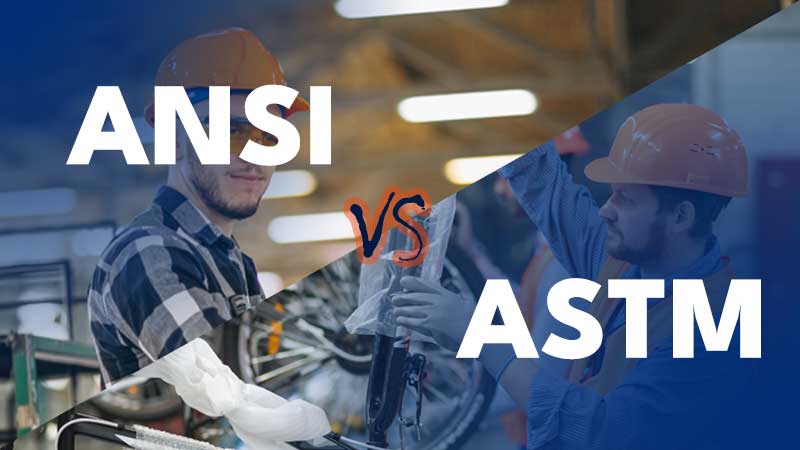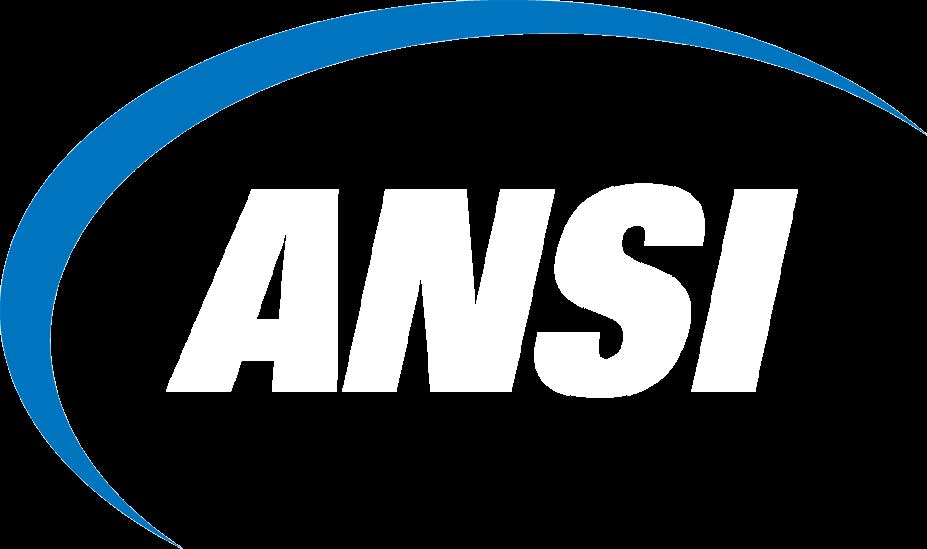The roles of ANSI and ASTM standards are crucial in ensuring safety and quality across various industries. Understanding the differences between ANSI and ASTM standards is essential for professionals involved in product development and safety compliance.
The ANSI (American National Standards Institute) oversees standards and conformity assessment activities in the United States. While, ASTM International develops and publishes technical standards for industries including iron and steel, metal, construction, rubber, petroleum, textiles, plastics, medical device and services, and more.
In this article, we’ll explain ASTM vs ANSI and clarify their differences.
What is ANSI?
ANSI is the abbreviation for the American National Standards Institute. ANSI is a non-profit, private organization that oversees the development of voluntary consensus standards for products, services, processes, systems, and personnel in the United States. It also coordinates U.S. standards with international standards to help ensure global market compatibility.
ANSI does not develop standards itself. Instead, it provides a framework that supports fair standards development and robust conformity assessment systems, ensuring their integrity over time. ANSI works closely with government bodies and experts within their industry field to collaborate and assist in developing regulations based on international and regional needs.
ANSI's Essential Requirements: Due process requirements for American National Standards are a set of provisions designed to ensure that the development of American National Standards is a fair and responsive process that is open to all directly and materially interested parties.
What is ASTM?
ASTM stands for ASTM International (formerly the American Society for Testing and Materials). Formed in 1898, ASTM is a not-for-profit global leader in the development and delivery of voluntary consensus standards.
It is a globally recognized organization that develops and publishes voluntary consensus technical standards for a wide range of materials, products, systems, and services. More than 13,000 ASTM standards are used worldwide to improve product quality, enhance safety, facilitate market access and trade, and build consumer confidence.
Who develops ASTM standards?
ASTM standards are developed and published by the American Society for Testing and Materials (ASTM).
Examples of ASTM standards
Here are some examples of ASTM standards:
ASTM F2236: Safety Standard for Soft Infant and Toddler Carriers
ASTM F963- Safety Standard for Toys in the US
Are ASTM standards mandatory?
ASTM standards are generally voluntary. That being said, some are incorporated by reference in US product regulations, which thus makes them mandatory.
Which products must comply with ASTM standards?
Products subject to US regulations that incorporate ASTM standards by reference must comply with those ASTM standards. For example, toys sold in the United States must comply with ASTM F963 as this is mandated by Part 1250.
Are ASTM standards recognized in the United States?
Standards developed by ASTM are generally accepted by US businesses and government agencies. This makes sense as the ASTM cooperates with US businesses and other American organizations in developing standards.
Are ASTM standards recognized in the EU or UK?
ASTM standards are generally not recognized by the European Union and the United Kingdom. For example, toys sold in the EU and the UK must comply with EN 71 standards. Compliance with the US equivalent, ASTM F963, is normally not accepted as a replacement.
That being said, the EU General Product Safety Regulation states that international standards can be used when there are no European standards available for a certain product or risk factor. In such situations, an ASTM standard may be the only option.
What is the Difference Between ANSI and ASTM?

Here’s a clear comparison of the differences between ANSI and ASTM:
|
Aspect |
ANSI (American National Standards Institute) |
ASTM (ASTM International) |
|
Full Name |
American National Standards Institute |
Originally American Society for Testing and Materials |
|
Role |
Oversees and accredits standard development processes |
Develops and publishes technical standards |
|
Type of Organization |
Coordinator and accreditor (not a developer of standards) |
Standards developing organization |
|
Primary Function |
Ensures fairness and openness in standards development |
Writes detailed technical specifications |
|
Scope |
Coordinates standards from many SDOs across industries |
Focuses on materials, products, systems, and services |
|
Standard Developers |
Accredits organizations like ASME, NFPA, UL, etc. |
Has its own technical committees to write standards |
|
Use of Standards |
ANSI does not develop standards itself |
ASTM standards are often used in contracts and regulations |
|
Global Reach |
Primarily U.S.-focused, but with international collaboration |
Widely used internationally, often adopted globally |
The main difference between ASNI and ASTM is that ANSI is focused primarily on voluntary guidance on processes and is an umbrella organization that covers several industries in which they accredit other organizations to do so and approve the standards they develop (including the ASTM).
On the other hand, ASTM is more active in creating and enforcing standards that the ASNI approves. Therefore, they work closely together in designing and governance new measures which must be conformed to.
Conclusion
The American National Standards Institute (ANSI) and ASTM International play a crucial role in setting quality standards across different sectors. ANSI is responsible for creating agreed-upon guidelines that guarantee the security and dependability of goods and services. In contrast, ASTM concentrates on developing voluntary consensus guidelines that encompass materials, products, systems, and services.
At GIS Inspection, we offer expert guidance to help businesses conform to industry, regulatory, and customer exacting standards and compliance with USA, European and international directives, bars, and testing requirements. Contact us today if you need quality inspection services.
Inspect by GIS Inspection
General Inspection Service-GIS is an international third-party quality control inspection company headquartered in China in 2005, which provides a professional range of product quality inspection and factory audit services to clients across multiple industries. We have set up an inspection network covering China, Vietnam, India and Malaysia. By employing only full-time inspectors, GIS is trusted by more than 12,000 brands globally.




